Submitted by WA Contents
Neri Oxman opens up her material library and processes with Material Ecology exhibition at MoMA
United States Architecture News - Mar 11, 2020 - 12:25 17321 views
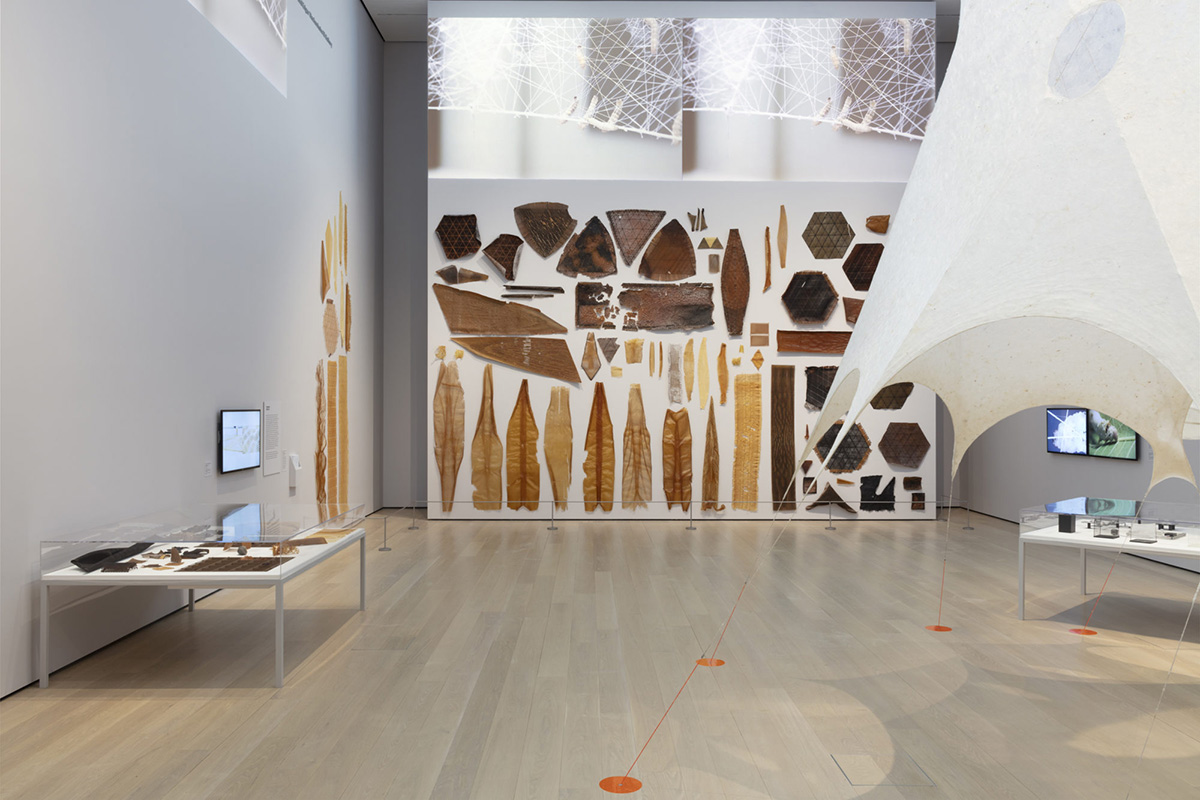
Architect, designer and inventor Neri Oxman, Professor of Media Arts and Sciences at the MIT Media Lab, has opened up her material library and processes on material science at the Museum of Modern Art (MoMA) in New York.
Oxman's comprehensive monographic exhibition was opened on February 22 and will be on view until May 25, 2020 at the MoMA.
The exhibition, curated by Senior Curator Paola Antonelli and Curatorial Assistant Anna Burckhardt, includes seven major projects that Oxman has created in the course of her 20-year career from The Mediated Matter Group where she founded it at Massachusetts Institute of Technology (MIT).
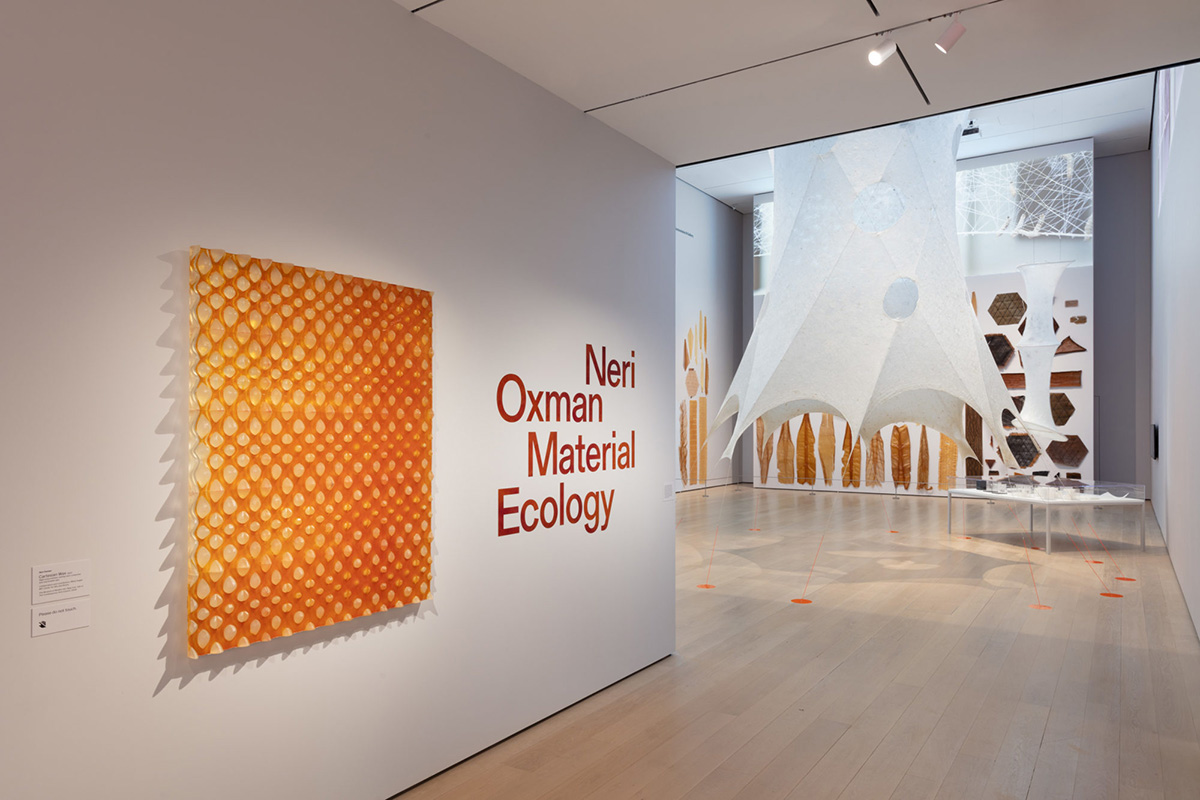
The exhibition is the first major body of work of Neri Oxman that is showcased as a collection at MoMA.
Through her work, Oxman has pioneered not only new ideas for materials, objects, buildings, and construction processes, but also frameworks for interdisciplinary—and interspecies—collaborations.
Titled "Neri Oxman: Material Ecology", Oxman has coined the term “material ecology” to explain her process of bringing together materials science, digital fabrication technologies, and organic design to produce techniques and objects informed by the structural, systemic, and aesthetic wisdom of nature.
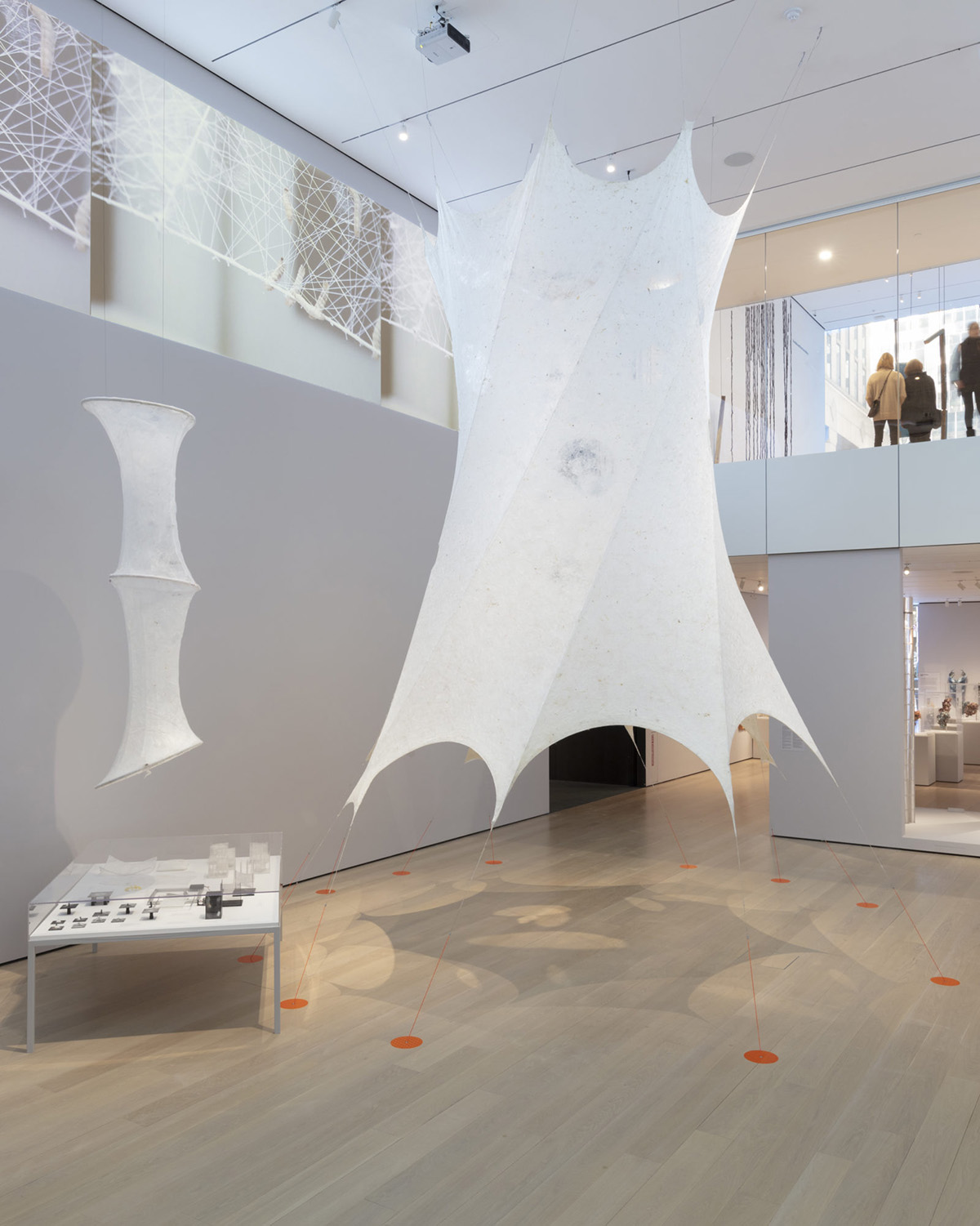
"Integrating computational form-generation with in-depth research of natural phenomena and behaviors, material ecology operates at the intersection of biology, engineering, and materials- and computer science," stated in an exhibition description.
"By means of this methodology and approach, the observation of, for instance, the configuration of the bark of birch trees, the characteristics of crustaceans’ shells, the behavior of silkworms, the expressions of melanin, or the flow of human breath have generated new design and production processes."
"While each research project is individually groundbreaking, taken as a group, they constitute a new philosophy of designing and making—and even unmaking—the world around us."
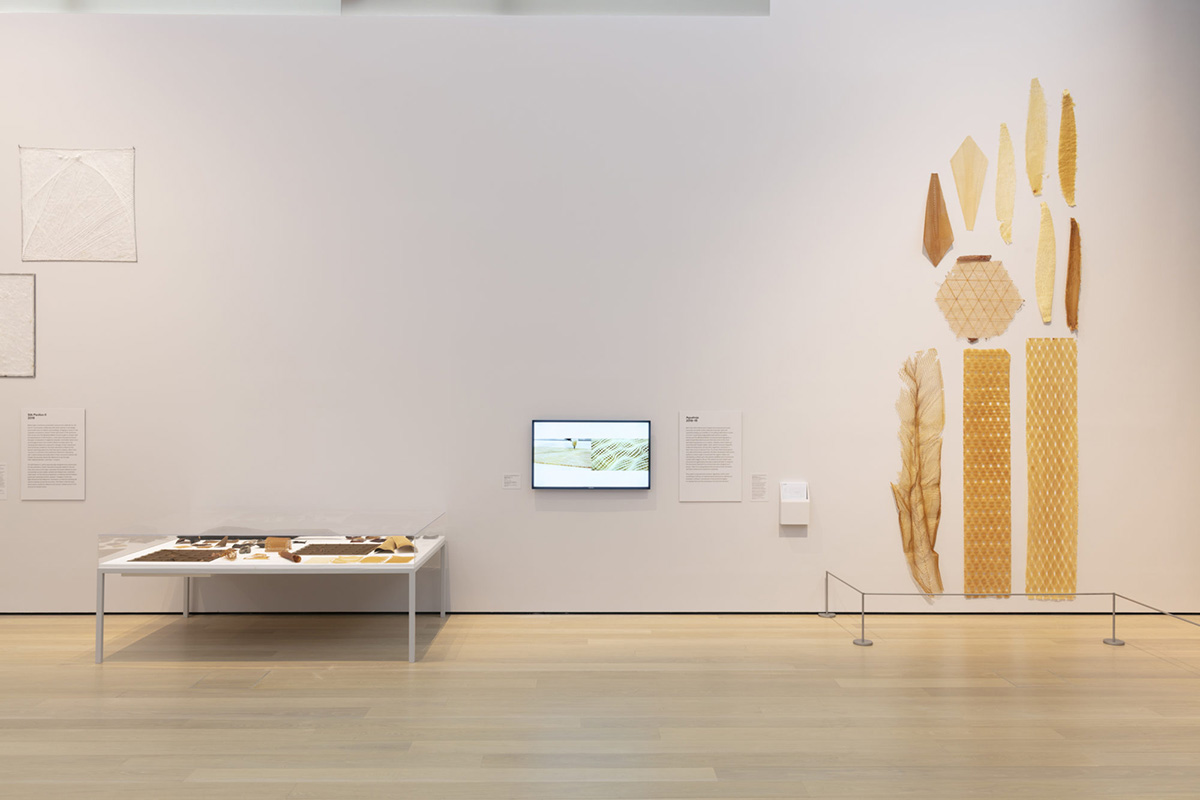
The projects selected for the exhibition are demos for a library of originally conceived materials and processes that will in the future be available to all architects and designers.
Each project is displayed alongside videos that highlight the science behind it and its production process.

The objects and structures are all designed as if grown—no assembly required. Together, these projects celebrate a new age in which biology, architecture, and design join forces to build the future.
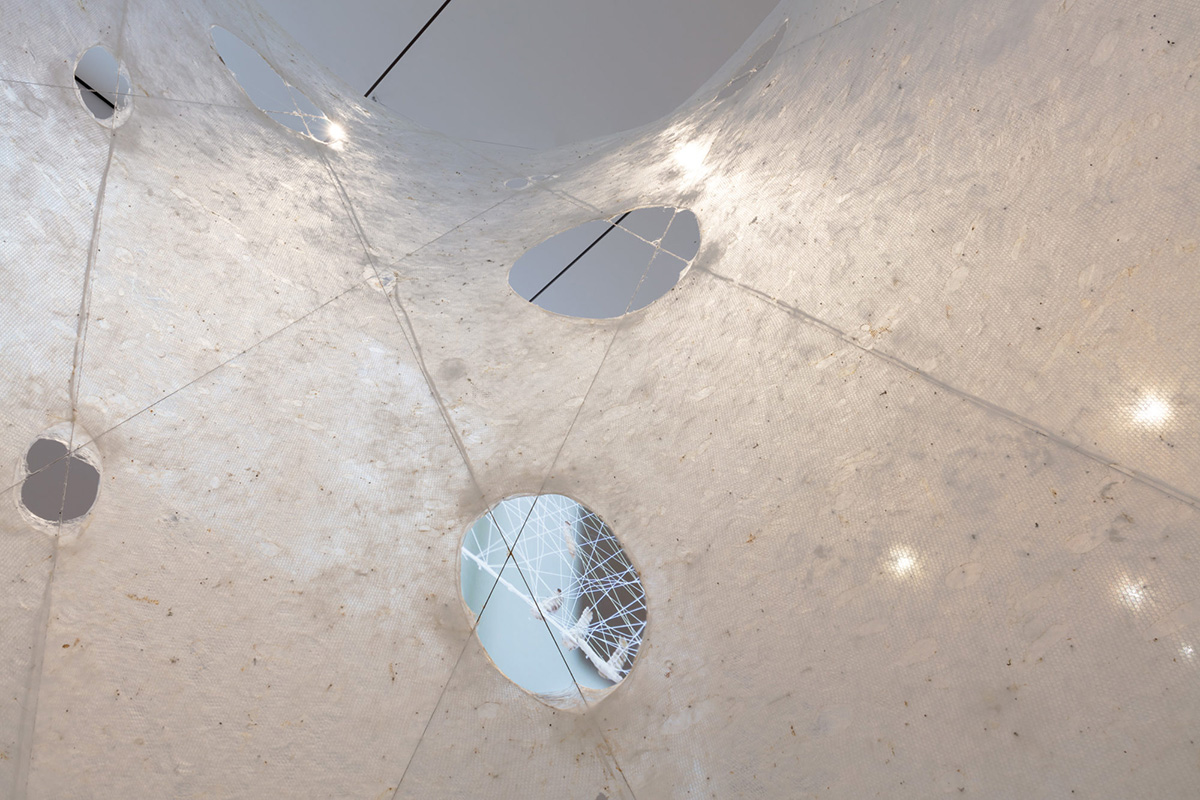
Among exhibited works of Oxman is Silk Pavilion II, a site-specific commission is on view for the first time at The Museum of Modern Art, which continues Oxman’s research on the relationship between digital and biological fabrication at the architectural scale, which she initiated in 2013.
Harnessing silkworms’ ability to generate a 3-D cocoon out of a single silk thread, Oxman and her research group created the overall geometry of a geodesic dome by using an algorithm that assigns a single continuous thread across patches providing various degrees of density. A swarm of 6,500 silkworms were positioned at the bottom rim of the robotically manufactured initial structure, composed of non-woven silk patches, and they were tasked with filling the gaps.
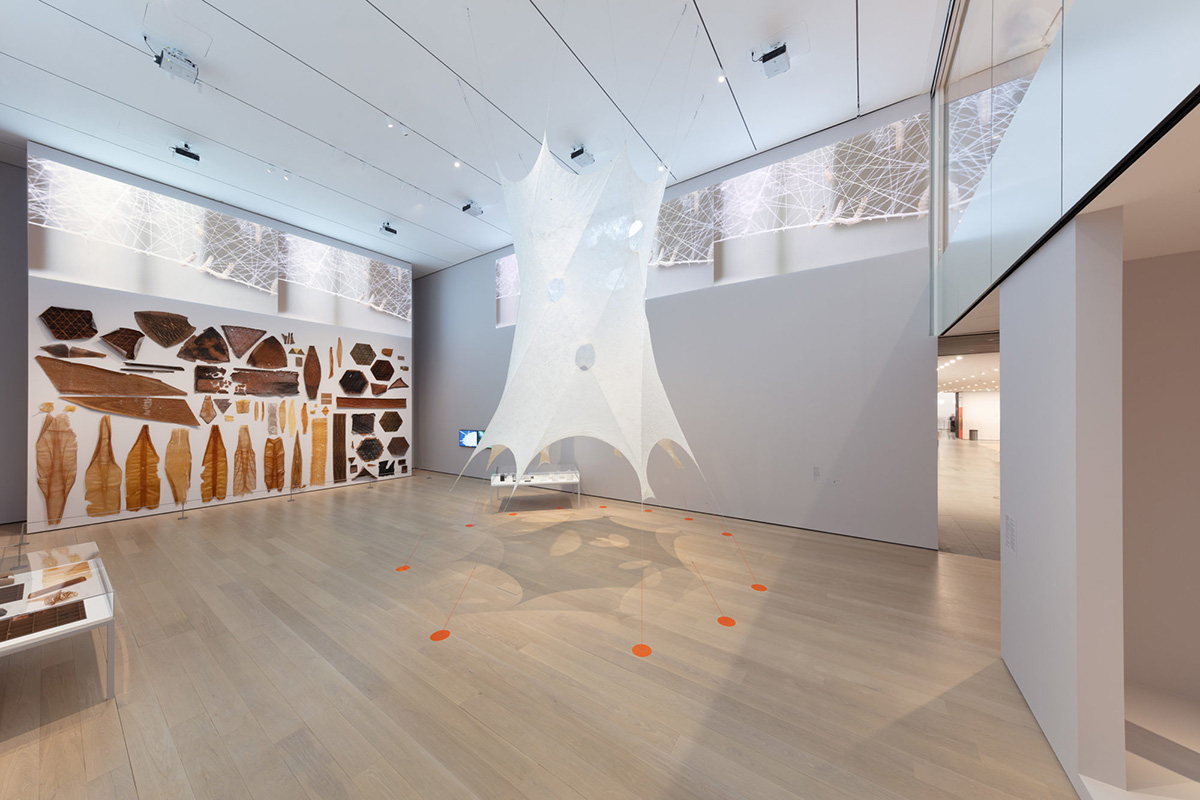
The overall density variation of the final structure was informed by the silkworm itself, which was deployed almost as a biological printer.
Unlike accepted procedures in the silk industry, this project demonstrated a novel process by which silk cocoons are not boiled and the silkworms metamorphose normally while pupating, hatching, and laying eggs, enabling the construction of additional pavilions.
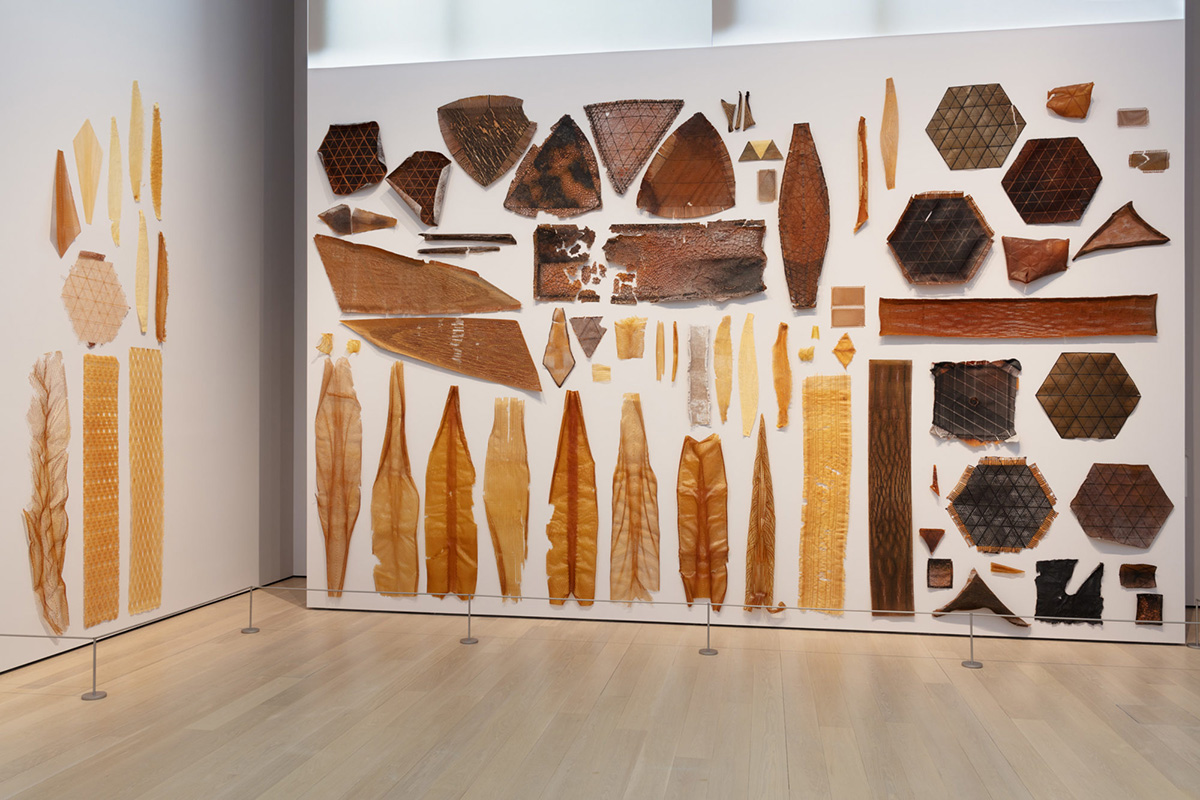
Seven years later, Oxman illustrates how the dynamics of this small and unique insect can influence rather than simply add to architectural forms, drawing from observations of their behavior to create a structure that guides both movement and silk deposition. In other words, the silkworm can act not only as construction worker, but as architect.
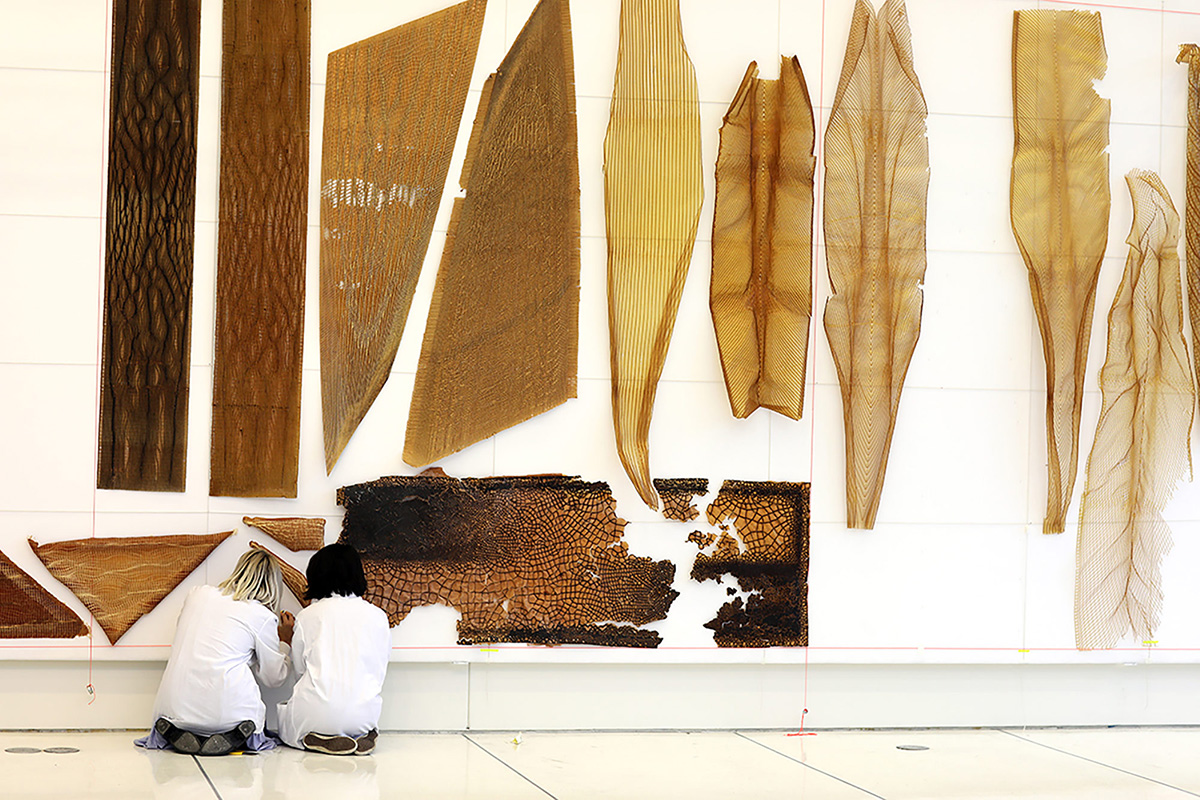
Aguahoja I. 2018. The Aguahoja Artifacts Display. Image © The Mediated Matter Group, courtesy The Mediated Matter Group
Other projects in the exhibition include Aguahoja (2018), which deploys some of the most abundant biomaterials on our planet, such as cellulose, chitin, calcium carbonate, cornstarch, and pectin. Derived from shrimp shells and fallen leaves, these materials are 3-D printed by a robot, shaped by water and augmented with natural pigments to create bio-compatible composites with functional mechanical, chemical and optical property gradients.
They can be used to digitally produce structures and objects that embody the lightness and flexibility—as well as the biodegradability—of leaves and wings; and the toughness of seashells, varying in size from millimeters to meters. Aguahoja aims to subvert the industrial cycle of material extraction and obsolescence through the creation of objects that exhibit tunable mechanical and optical properties, and respond to their environments in ways that are impossible with synthetic materials. During use, these aspects allow the structure to communicate with and respond to its environment; once obsolete, it biodegrades, dissociating to its molecular components to fuel new growth.
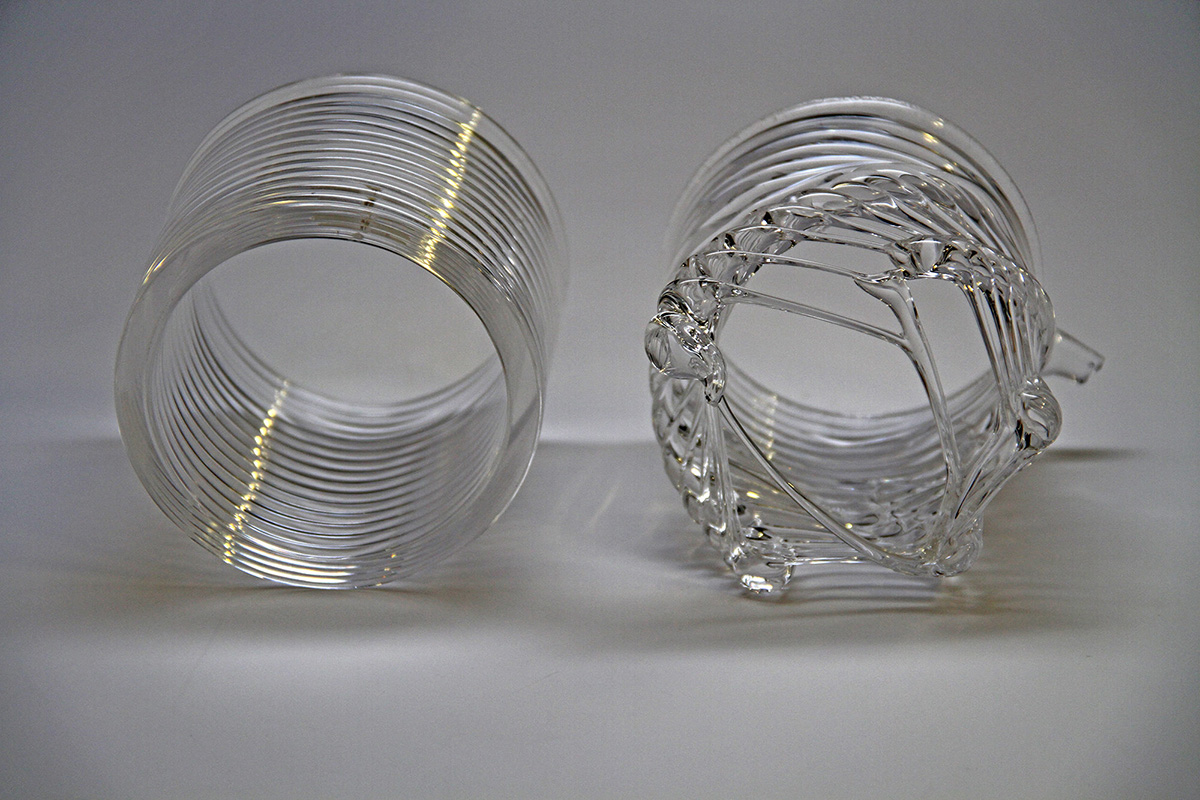
Neri Oxman and The Mediated Matter Group. Glass I. 2015. Image courtesy The Mediated Matter Group
Among the other projects in the exhibition are Glass I and II (2015 and 2017) and Totems (2019). Glass I and II are created through a high-fidelity, large-scale, additive manufacturing technology for 3-D printing optically transparent glass structures at architectural dimensions—in essence, a 3-D printer for the type of glass usually employed to harness solar energy.
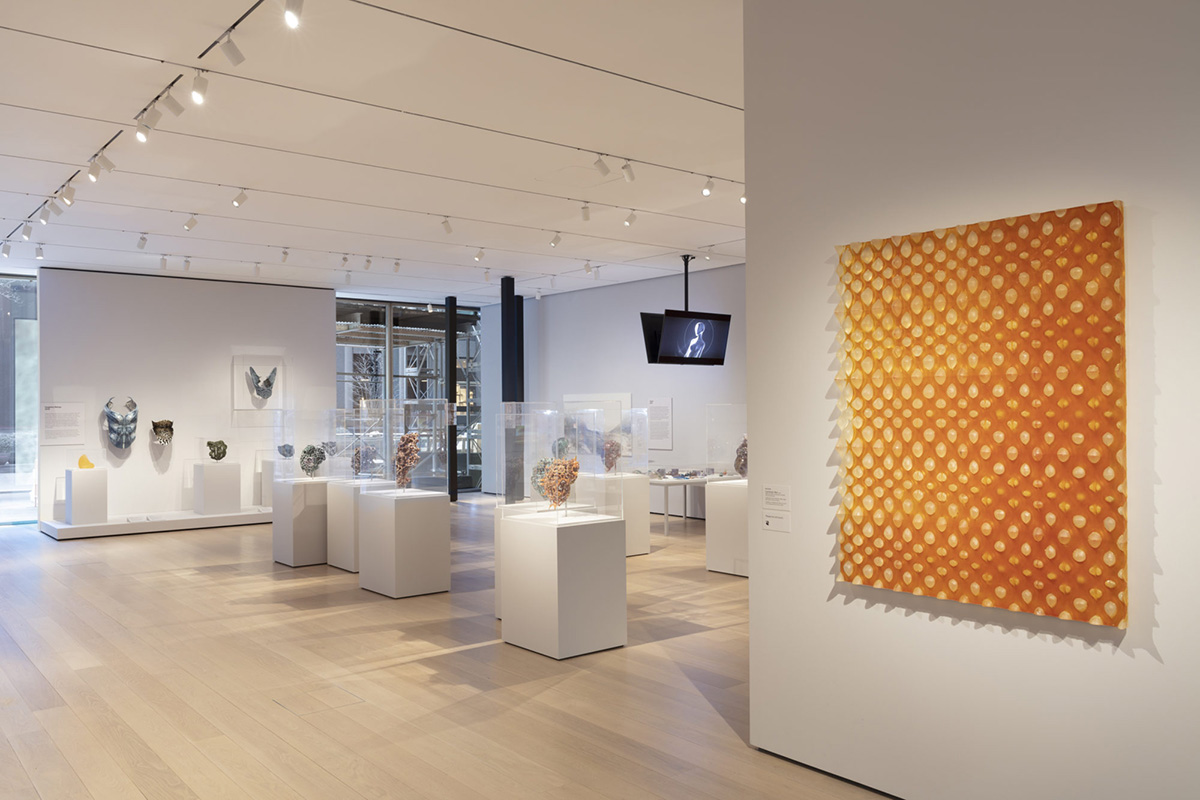
Neri Oxman is an American-Israeli designer and professor at the MIT Media Lab, where she leads the Mediated Matter research group. Her team conducts research at the intersection of computational design, digital fabrication, materials science and synthetic biology, and applies that knowledge to design across disciplines, media and scales—from the micro scale to the building scale.
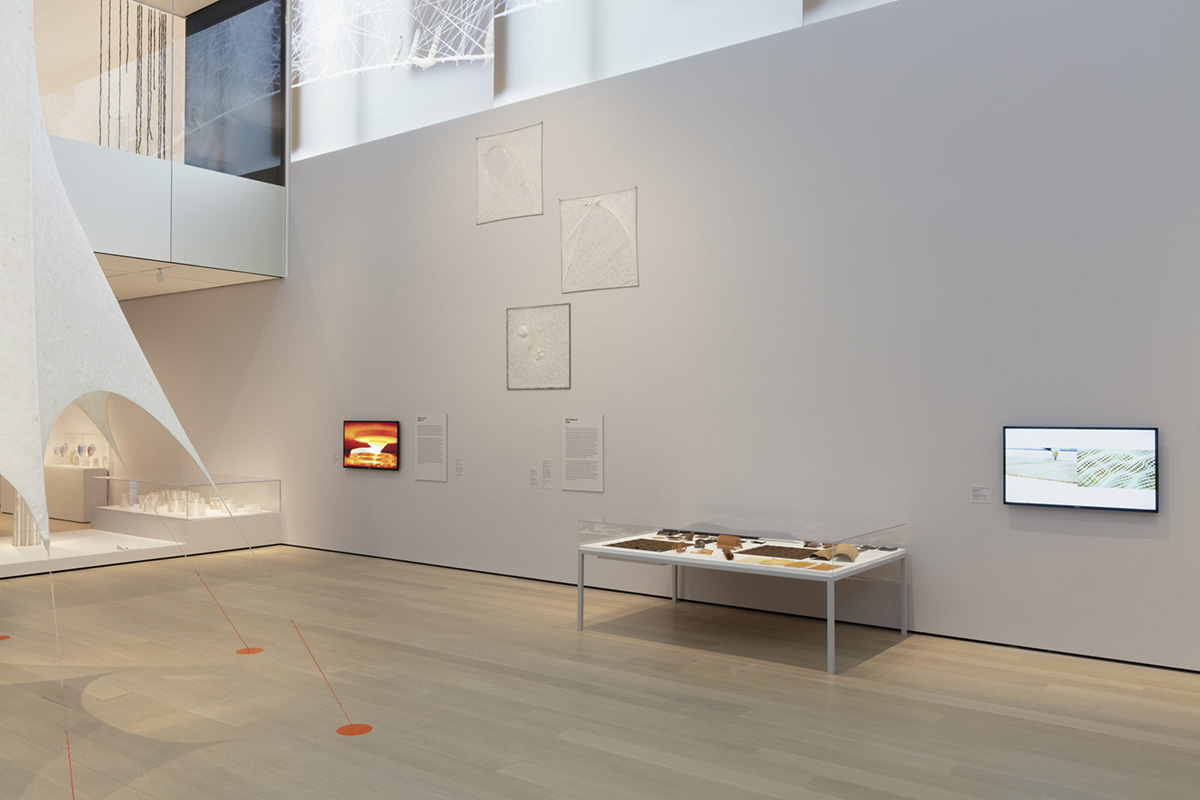
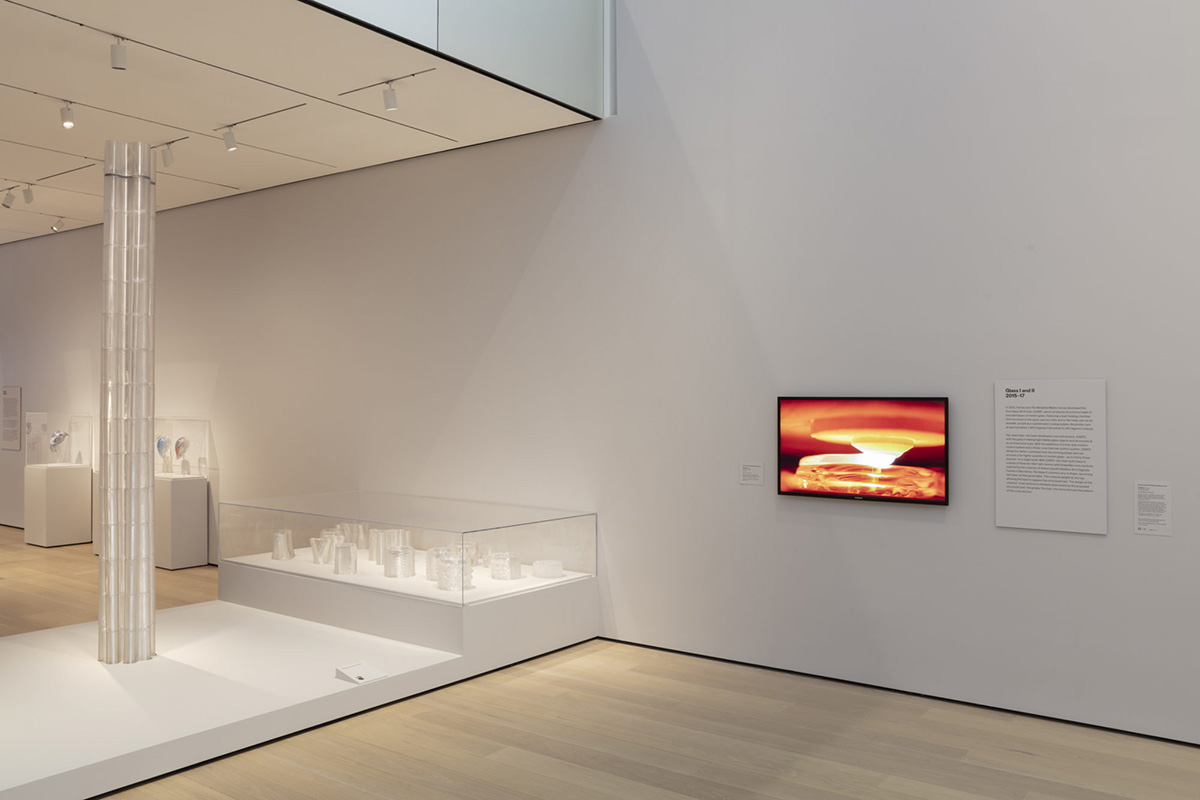
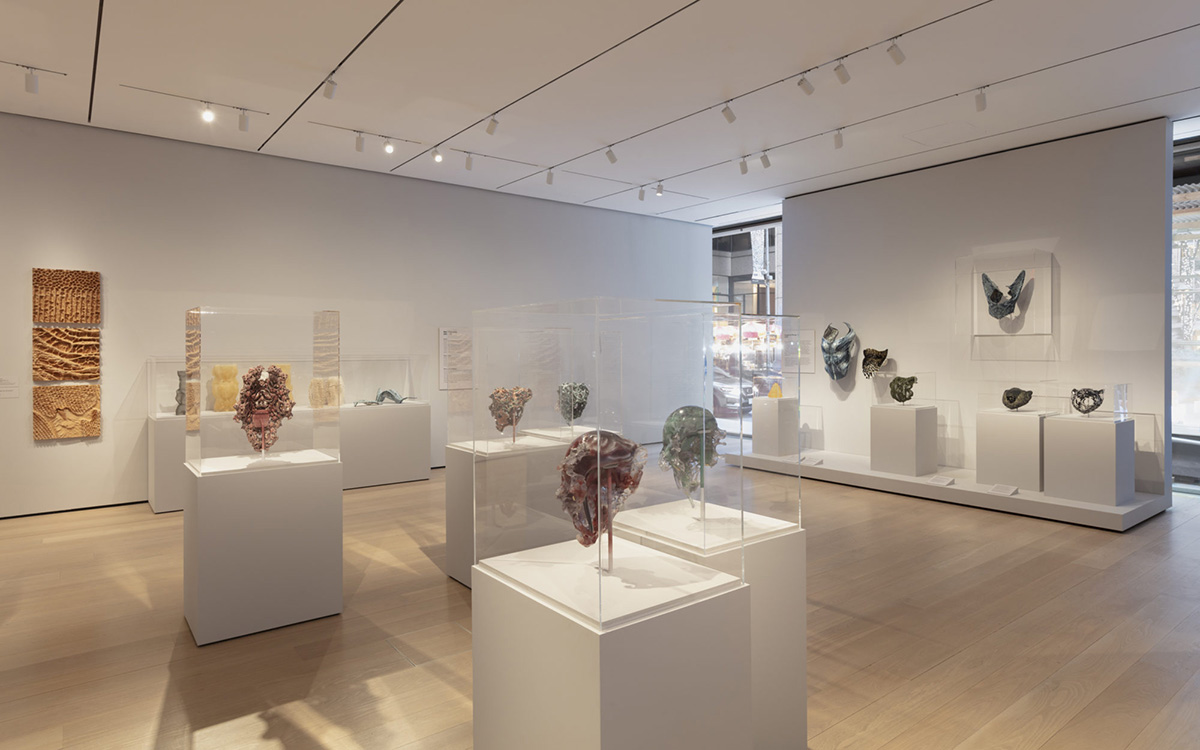
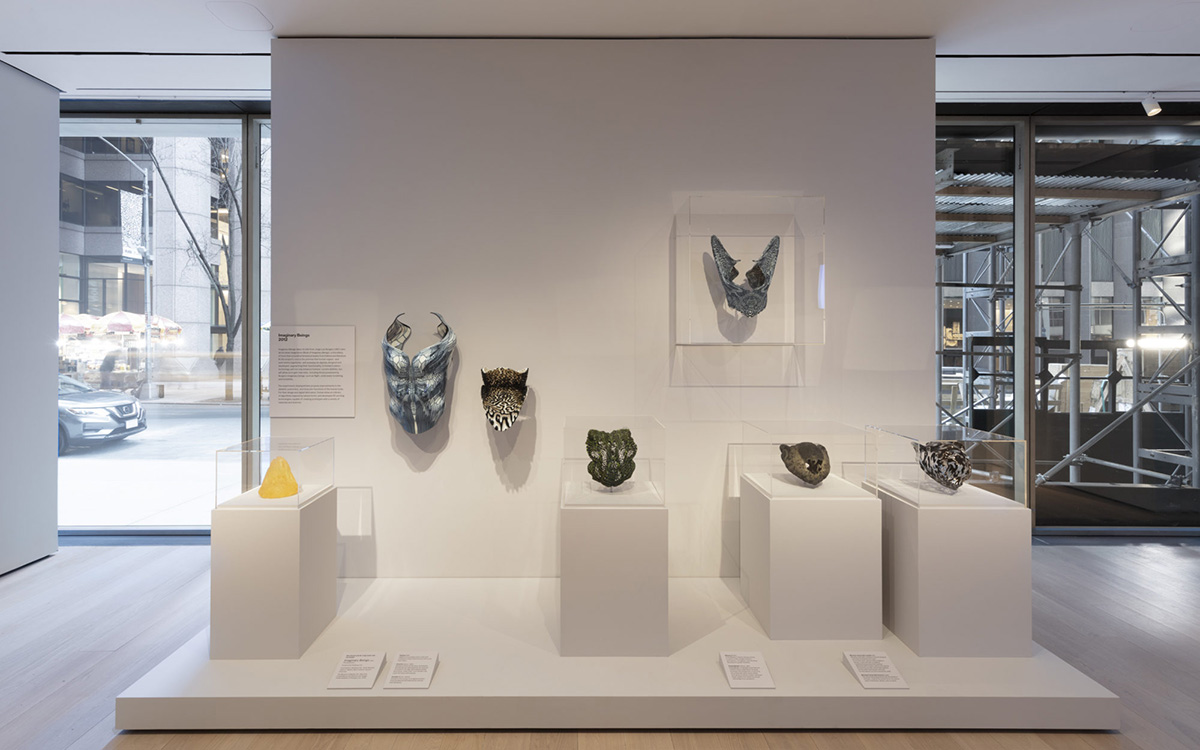
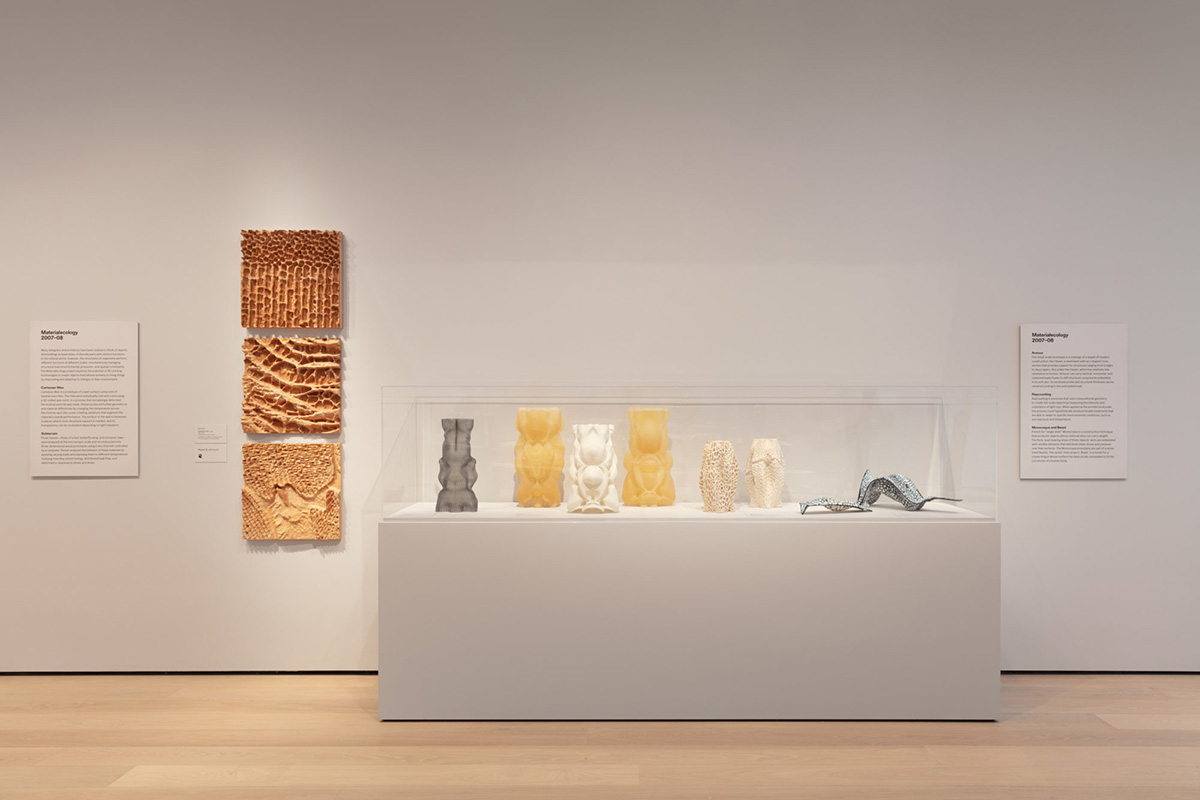
Neri Oxman received her PhD in Design Computation as a Presidential Fellow at MIT, where she coined the term Material Ecology to describe her research area.
Prior to MIT she earned a diploma from the Architectural Association (RIBA 2 with Distinction) after attending the Faculty of Architecture and Town Planning at the Technion Israel Institute of Technology (Hons), and the Department of Medical Sciences at the Hebrew University in Jerusalem.
Neri Oxman: Material Ecology will be accompanied by a fully illustrated publication, edited by Paola Antonelli with graphic design by Irma Boom.
The catalogue will feature essays by Antonelli and Hadas Steiner, Associate Professor, School of Architecture and Planning, University of Buffalo.
All images © Denis Doorly courtesy of the Museum of Modern Art, unless otherwise stated.
> via MoMA
